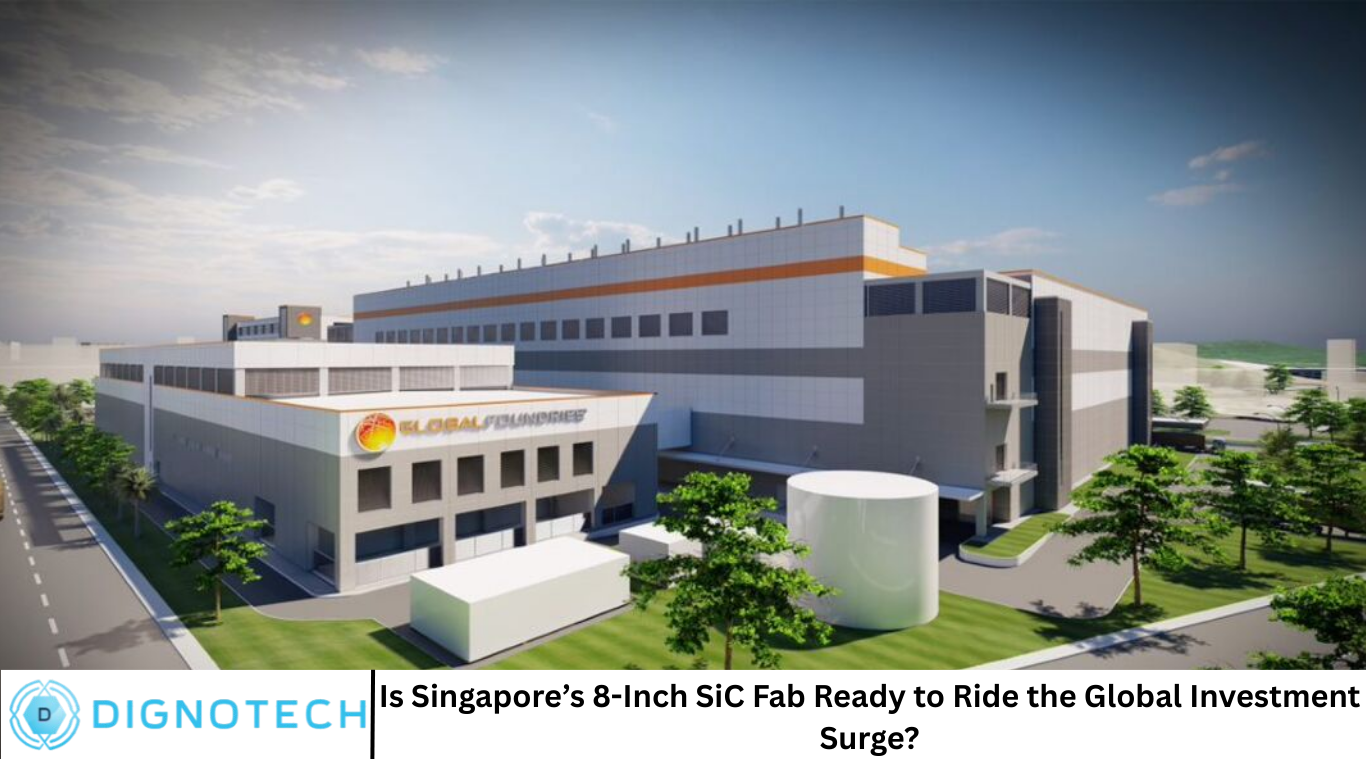Is Singapore’s 8-Inch SiC Fab Ready to Ride the Global Investment Surge?

Singapore recently made waves with the launch of the world’s first industrial-grade 8‑inch (200 mm) SiC (silicon carbide) production line. Operated by A*STAR’s Institute of Microelectronics, this open R&D platform spans everything from material growth and defect analysis to device fabrication and testing. It aims to tackle cost, complexity, and fragmented expertise in wide-bandgap semiconductor technology—critical for high-power applications like electric vehicles, data centers, and renewable energy systems.
While this is a bold move positioning Singapore as a serious contender in SiC tech, it comes amid a global sprint. Multiple nations—China, Japan, Malaysia, South Korea—are racing ahead with their own 8‑inch SiC fabs on the drawing board or already operational. The decisive question: Can Singapore’s new fab truly keep pace in this rapidly evolving ecosystem?
What Singapore Brings to the SiC Table
- Full-Process R&D Capability
The A*STAR facility isn’t just manufacturing — it’s an integrated R&D hub complete with everything from crystal growth to device testing. This lowers the barrier for local companies to engage in SiC development, improving competitiveness through collaborative access to advanced infrastructure. - Collaborative Ecosystem
Singapore has secured partnerships with heavyweights like ASM, centrotherm, and Soitec. To illustrate: IME and Soitec are co-developing SmartSiC™, blending SmartCut™ wafer tech with Singapore’s pilot line, potentially elevating quality and efficiency. - Strategic Government Backing
The government has committed around SGD 1 billion, signaling long-term support in both R&D and advanced packaging capacity. This creates a robust foundation for Singapore’s ambitions—and attracts global players to set up complementary operations locally.
Global 8‑Inch SiC Momentum: Regional Neighbors Accelerate
- Widespread Rollouts
At least 14 new 8‑inch SiC fabs are being planned worldwide across Asia, Europe, and North America. Industry leaders like STMicroelectronics, Infineon, Wolfspeed, and ROHM are investing heavily in mass production lines. - Rapid Costs Drops
Larger wafer sizes drive down unit costs significantly. Transitioning from 6‑inch to 8‑inch can reduce costs by approximately 35%, while improving utilization and yield. - Regional Powerhouses in Motion
- Malaysia: Infineon has inaugurated what is set to become the world’s largest 200 mm SiC fab.
- China: Companies like SICC and TankeBlue are expanding substrate and epitaxy capacity at scale.
- Japan & South Korea: National strategies and collaboration with firms like Soitec are supercharging local abilities.
Singapore’s new fab, while groundbreaking, remains one actor among many advancing at high speed.
Strengths, Risks, and Readiness
Strengths:
- First-Mover in Open R&D: Few competitors offer such a comprehensive open-access platform.
- Institutional Focus: A*STAR’s academic-industry link positions Singapore well for innovation.
- Ecosystem Support: With government funding and local talent, Singapore stands on solid ground to execute.
Risks:
- Scale Gap: Many competitors are building mass-production fabs; Singapore’s is firmly R&D-oriented.
- Late Industrialization: Time-to-market and industrial scaling may take longer here, risking leadership in high-volume SiC.
- Intensifying Global Race: As everyone pushes into 8‑inch SiC, competition grows fierce and margins tighten.
Is Singapore Prepared to Ride the Surge?
Yes — but strategically. Singapore has carved a niche as an innovation and development hub, enabling early access to emerging tech. This positions the country to attract global partners, incubate startups, and drive standards.
However, long-term success will hinge on:
- Translating R&D work into scalable production.
- Building downstream capabilities like device manufacturing, packaging, and supply chain integration.
- Expanding talent pipelines and securing industrial partners aligned with commercial deployment.
Broader Implications for Singapore’s Semiconductor Landscape
- Ecosystem Uplift: With foundational SiC capabilities in place, Singapore can bolster its broader chip industry—complementing wafer fabs, packaging, and chiplet integration efforts.
- Enhanced Resilience: Diversifying into advanced materials and power electronics strengthens Singapore’s role beyond just logic or memory chips.
- Sustainability and Green Transition: SiC enables more efficient power conversion and renewable energy systems—making Singapore a contributor to global decarbonization initiatives.
Frequently Asked Question
Why is 8‑inch SiC better than smaller wafers?
Larger wafers improve utilization, reduce edge wastage, and significantly lower per-unit manufacturing cost.
Why is Singapore’s new fab unique?
It’s the first 8‑inch SiC line designed as an open-access R&D platform—intended to accelerate innovation and commercialization.
Can a research-focused fab compete with mass-production fabs?
Not directly. Singapore’s fab plays a complementary role—driving innovation rather than competing on volume.
How significant is the government’s investment?
Roughly SGD 1 billion demonstrates serious long-term commitment to developing advanced semiconductor materials and packaging capability.
Which countries pose the biggest competitive pressure?
Malaysia, China, Japan, South Korea, and the U.S. all are scaling up SiC mass production with supportive policies and supply chains.
Is demand for SiC growing fast enough?
Yes. SiC demand from EVs, renewable energy, and AI data centers is surging, with 8‑inch capacity projected to capture growing market share.
What must Singapore do next to stay relevant?
Move from R&D to integrated production; cultivate skilled workforce; develop full supply chain—from substrates to packaging to devices.
Conclusion
Singapore’s 8‑inch SiC fab is a strategic and timely investment—setting the stage for leadership in wide-bandgap semiconductor R&D. While it may not immediately rival mass-production facilities globally, its strength lies in fostering innovation, partnerships, and commercialization. With continued focus on scale, talent, and ecosystem integration, Singapore can ride the global SiC surge—not as a follower, but as a critical innovation hub shaping the future of power semiconductors.



